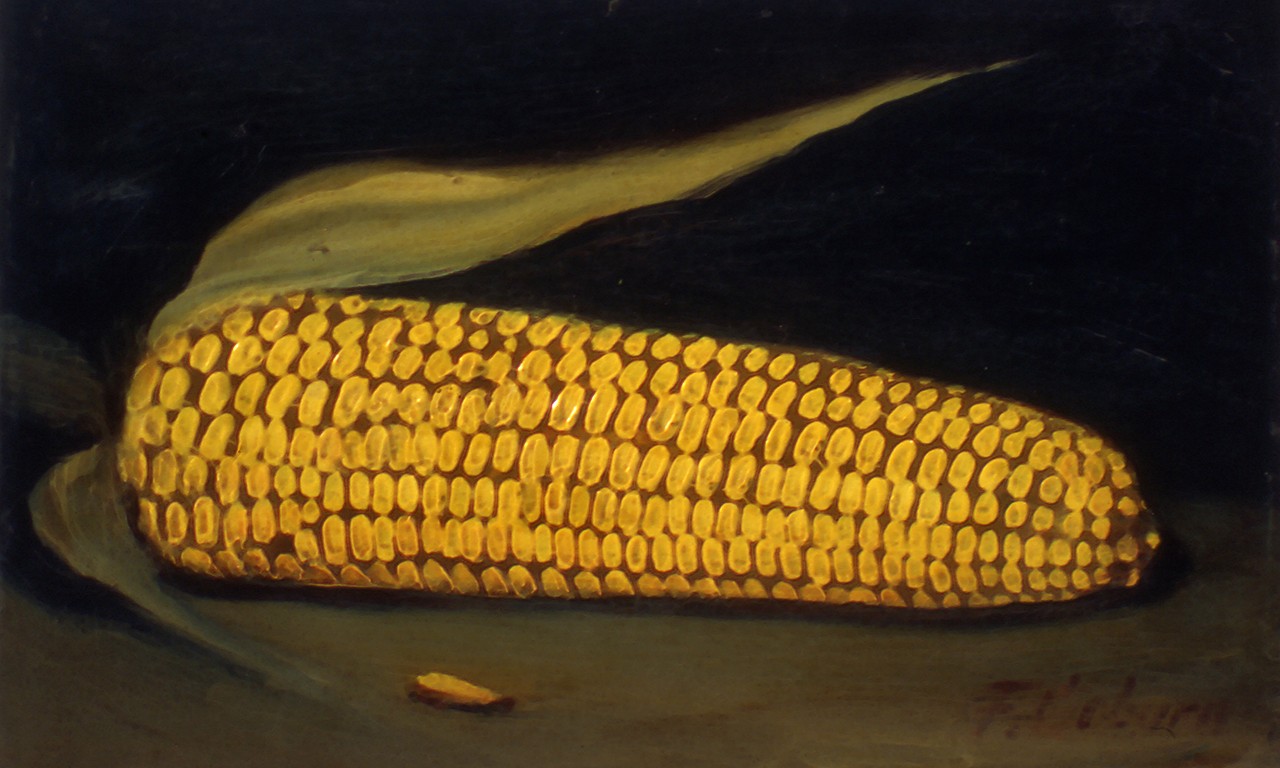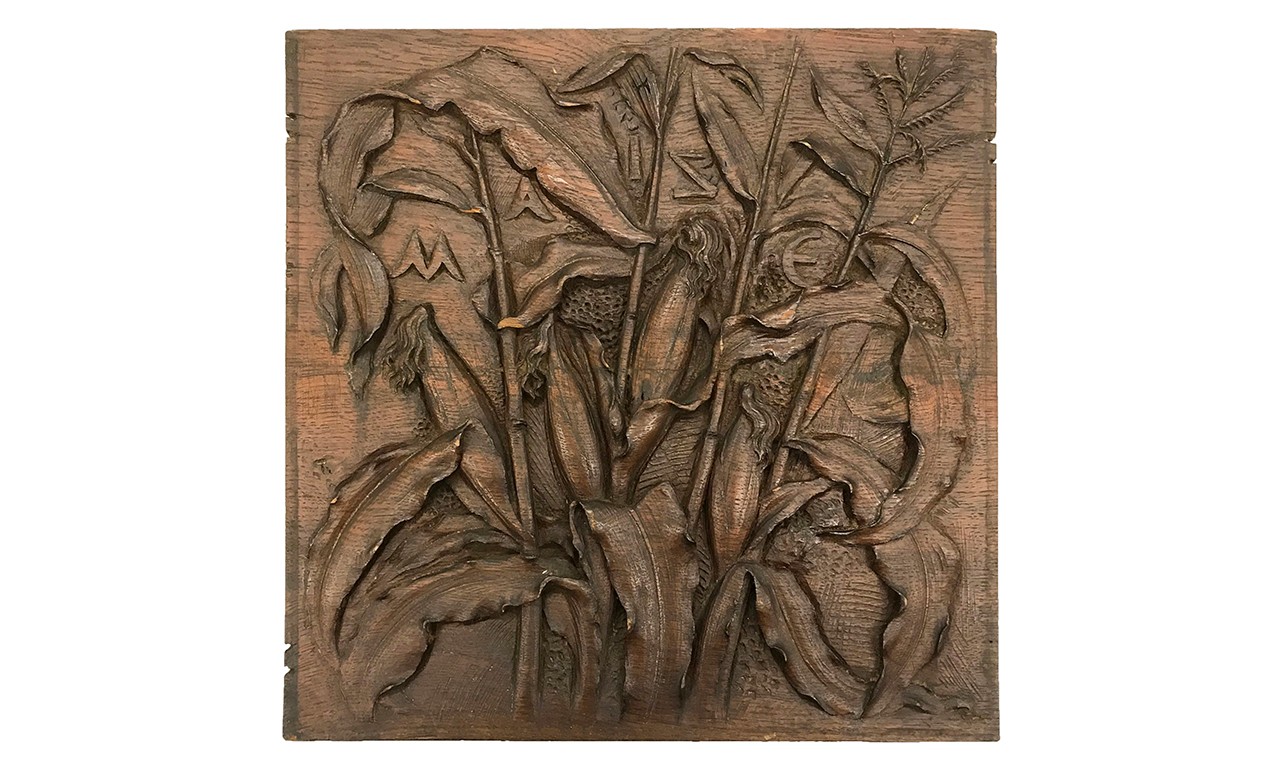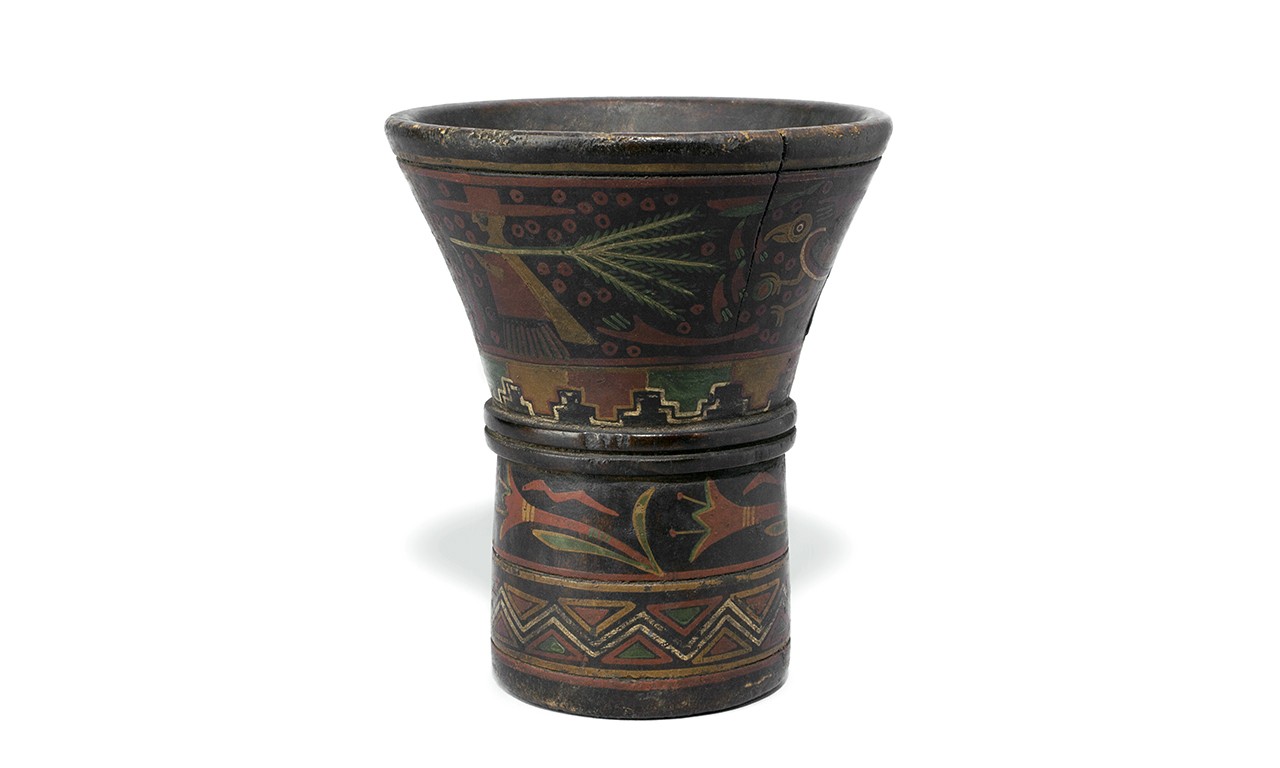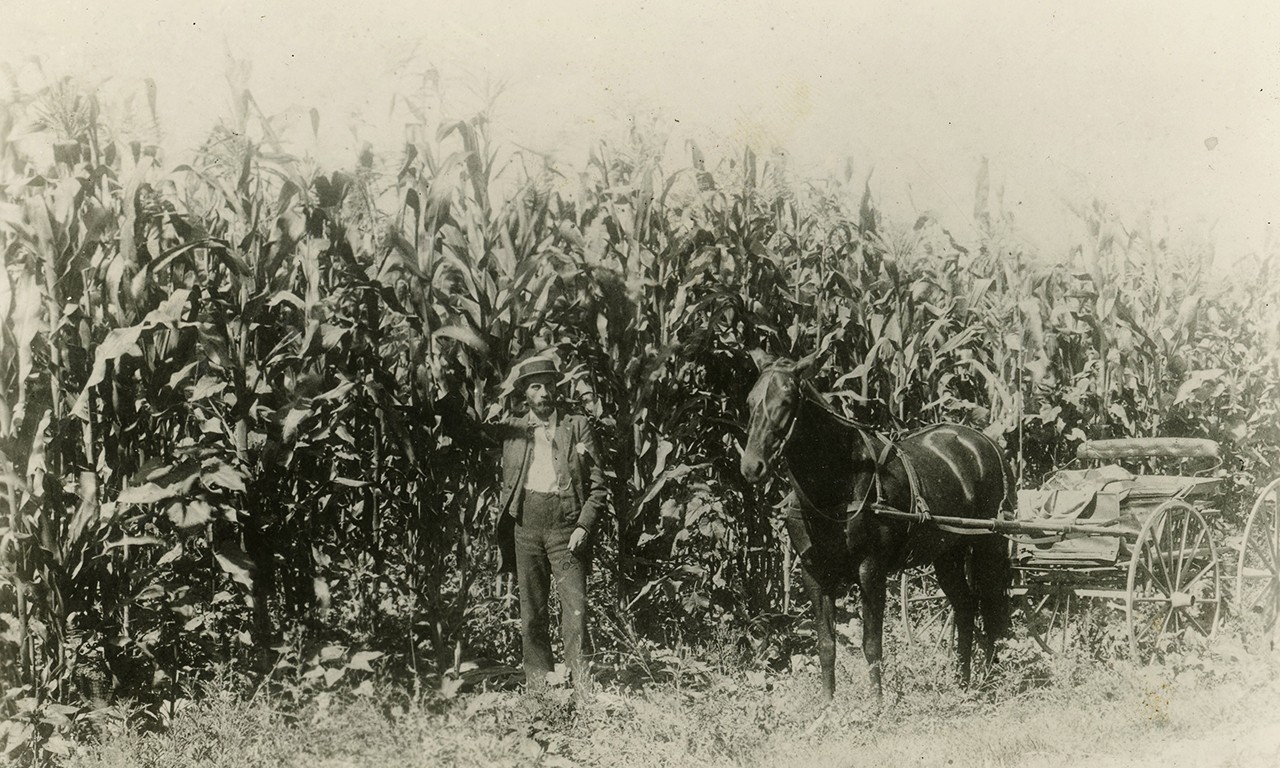2002 North Main Street
Santa Ana, California 92706
TEL: 714.567.3600
Kernel of Thanksgiving: The Bowers Museum’s Corn-llections
 |
| Tustin's Peanut Cornucopia at the Parade of Products, 1905-1906 Unknown photographer; Santa Ana, California Photographic print; 5 x 7 in. 17429 Gift of Mrs. Lucy Lockett |
Cornucopia
Those of us who are familiar with the story of the Pilgrims’ arrival in Plymouth know that they would have perished in a harsh winter had it not been for the help of Tisquantum, who taught them how to plant a crop of flint corn. Almost exactly 400 years later we still eat a sweet variety of corn on the holiday, meaning that the cobbed food has remained a lasting symbol of kindness and neighborliness, the likes of which serve as corn tenants of thankfulness on Turkey (or Tofurkey) Day. In this Thanksgiving post we celebrate the holiday and staple by looking at a survey of maize across the Bowers Collections.
 |
| Untitled (Ear of Corn), late 19th to early 20th Century Frank Coburn (American, 1862-1938) Oil on Masonite; 6 1/2 x 10 in. 87.8.2 Gift of Mr. Bob Stillwell |
Cornceptual Art
Frank Coburn’s somber or vibrant works have long been visitor favorites at the Bowers and have been featured in both Frank Coburn’s Forest of Arden and Three Vignettes of Frank Coburn. Though the artist is perhaps best known for his landscapes and portraits, he did paint the occasional still life, all the same this untitled depiction of a single ear of yellow corn with two brownish shucks stands out from his oeuvre as an outlier. The paintings donor anecdotally mentioned that Coburn had been challenged to paint the corn by another artist. Tragically, further details have been lost to time, but in the end, he created at least two paintings of corn. Aside from the subject matter the style itself is atypical for Coburn and could have been an attempt to replicate that of Alfred Montgomery. The latter artist was known for still life paintings with corn strewn as casually across barn scenes as clocks across a Dali. It may or may not also be worth noting that by removing the “bu” from Coburn’s surname one is left only with the husked subject of the post.
 |
| Wood Panel, late 19th Century Unknown Maker; probably California Wood; 14 1/4 x 14 1/8 in. 2002.61.6 Gift of Robert C. Politski |
Amaizeing Carving
This woodcarving is from a series of six which depict various scenes, animals, and cereal grains referenced in Henry Wadsworth Longfellow’s epic 1855 poem, The Song of Hiawatha. Strikingly little is known about where the panels came from or why they were carved, though given that the donor of the pieces was a Santa Ana lawyer for many years, it is possible that they were originally used as architectural decorations for a building in Santa Ana. They were likely made right around the turn of the 20th century. Corn appears in two of the six panels and in this one is interestingly captioned “maize.” Four of the six panels are captioned in a similar fashion with what would be the appropriate—given the reference to Longfellow’s poem—Ojibwe words, however maize is an Anglicization of the Hispanicization of the Taíno word, mahiz. Why the Caribbean term was used in this context only deepens the mystery of this darkly patinated woodcarving.
 |
| Cup (Kero), date unknown Inca culture; Peru Wood and paint; 5 3/4 x 4 3/4 in. 87.20.2 Gift of Mr. and Mrs. Paul De Bach |
Drink Your Veggies!
Corn buffs will be the first to tell you that only a little over 10% of all corn grown in the United States is ever eaten by humans, and a large percentage of that number goes into cereals, high fructose corn syrup, sweeteners and drinking alcohol (as opposed to ethanol). This latter usage appears to date at least as far back as the 5th millennium BCE, as evidenced by Incan vessels created for the purpose of storing and drinking beer dating from that time. The above is a similar object to those, a kero, which would also have been used as a drinking cup by the Incan elite. As was often the case with many Incan object types, the production of these vessels was highly regulated both in terms of shape and—specific to the kero—in terms of the number of vessels made. Incan corn beer or chicha was always consumed with company, so cups were made in matching pairs. Based on the painting, this vessel dates to the early colonial period.
 |
| P.A. Stanton in his Field of Corn, 1896-1899 Walter Lehmann; Orange County, California Photographic print 32154D Bowers Museum Collections |
Bend Your Ear
This only scratches the surface of the bountiful harvest of corn-themed objects in the collection. Of course, any Bowers survey post would be incomplete without a photograph dating from around the turn of the 20th century. The above was discovered in the museum’s old upstairs annex and shows a Santa Anan by the name of P.A. Stanton proudly standing in a field of corn which he grew sans any irrigation. Other worthy mentions include several machines for the planting, husking, and shelling of corn; dolls made from corn husks; and even some kernels of ancient corn which are about as remarkable as one might expect. Whether it is by calling in to a family gathering via Zoom or by not giving in to the call of takeout despite only preparing food for your COVID bubble, as we celebrate a very different kind of Thanksgiving this year be sure not to cast all cornventions aside!
Text and images may be under copyright. Please contact Collection Department for permission to use. References are available on request. Information subject to change upon further research.

Comments